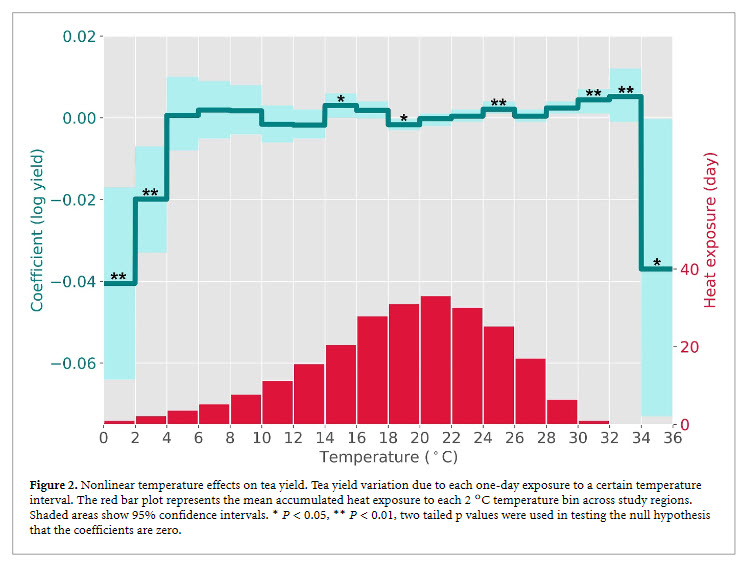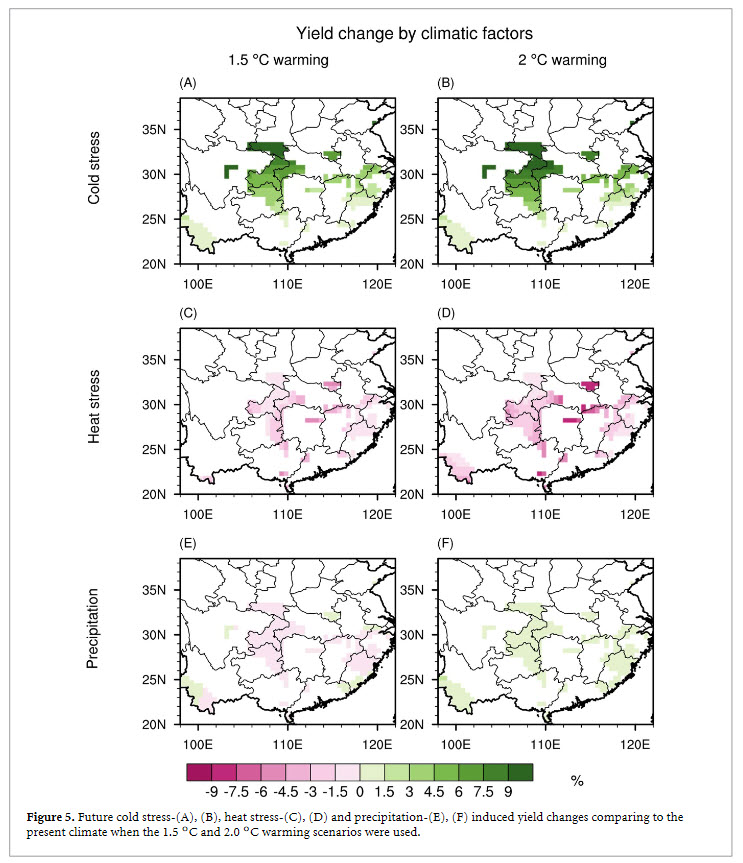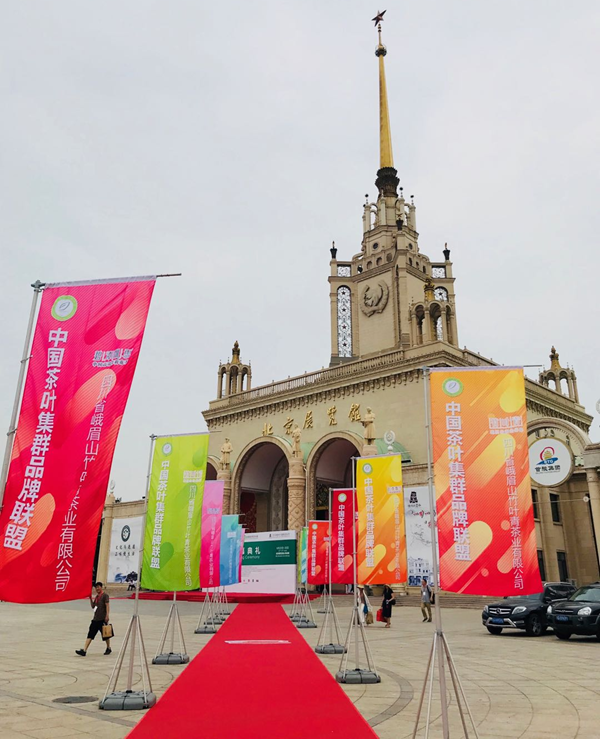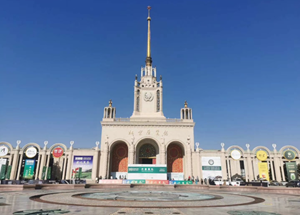Hear the Headlines
| Top India Tea Producer McLeod Russel Faces Bankruptcy
| Tea Authentication Protocol to Chemically Verify Origins
| Soggy Soil Keeps Kulhads in Short Supply
This week’s highlight is the news from Darjeeling, of the sale of the estates Jungpana and Goomtee. The new owner is the Santosh Kumar Kanoria Group led by Anshuman Kanoria that also owns the estate, Tindharia, also in Darjeeling. Jungpana was last on the market in 2017. Read more…
Features
Tea Biz this week travels to Brooklyn where Rona Tison executive vice president of ITO EN North America explains the appeal of functional tea and introduces a new matcha LOVE ENERGY + line of ready-to-drink teas.
… and then to New York City, headquarters of the World Tea Academy, where online education director Lisa Boalt Richardson describes the newest of six certification programs.

Natural Tea Energy
By Dan Bolton
In the ready-to-drink category, tea-focused brands like ITO EN are innovating. Instead of concentrates and solubles, line extensions are brewed from whole leaves from sustainably grown tea and offered in recyclable packaging. Rona Tison, Executive Vice President of ITO EN North America, joins Tea Biz to discuss what makes tea the ideal base for function-enhancing blends that appeal to health-conscious consumers. Learn more…
Listen to the Interview
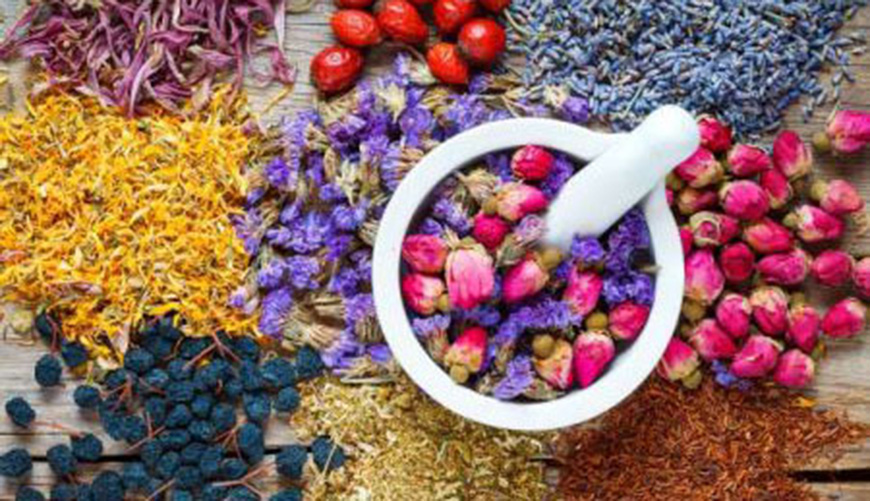
An Aromatic Education Online
By Jessica Natale Woollard
Tea industry certifications are becoming sought after in the industry. There are certifications for tea specialists, sommeliers, blenders, health experts, and now tea aroma specialists, a new offering from the World Tea Academy. Joining me on the podcast today are Lisa Boalt Richardson, online education director of the World Tea Academy, and Kathleen Hippeli – Lisa’s assistant and a former tearoom owner.
Listen to the Interview

Tea Giant McLeod Russel Faces Bankruptcy
By Dan Bolton
McLeod Russel India, once the largest producer of tea in the world and currently India’s largest tea producer — is facing bankruptcy. McLeod, a Kolkata-based division of the Brij Mohan Khaitan Group that employs 73,000 workers, operates 31 estates in Assam and two in West Bengal as well as tea gardens in Africa and Vietnam.
The corporate insolvency resolution process (CIRP) was triggered by default on a $14 million (INRs 100 crore) loan dating to 2018 but McLeod carries $270 million in debts and faces a combination of debtors. The application was revealed in a stock exchange filing Aug. 6. An interim resolution professional was named to the National Company Law Tribunal case.
Azam Monem will continue to guide the operations of the company and key managerial staff remain in place with the intent to restructure.
The storied company dates to 1869 when J.H. Williamson and Richard B. Magor operated in Assam. The Khaitan family purchased the company in 1987 and in 1994 purchased 51% of battery maker Union Carbide’s Eveready Industries operating the company in two divisions, electrical and tea. The company went public in 2000 and in 2004 demerged into two separate companies McLeod producing and marketing tea and Eveready manufacturing batteries and flashlights.
In August 2017 McLeod sold Bhatpara TE for $2 million, according to Global Ag Investing. It was the first garden sold in the firm’s modern history as production rose to a peak that exceeded 118 million kilos that year (2017-18). Acquisitions from 2005 to 2010 had increased the number of estates to 48 including Williamson Tea, Doom Dooma Tea Company (2007), Moran Tea (2008), and Borelli Tea (17 tea gardens) bringing McLeod’s total acreage under tea to 98,000 acres (39,770 hectares). Revenue exceeded $265 million with $9.7 million in profits in fiscal 2016.
Biz Insight – A combination of massive flooding in Assam, rising labor costs and conflicts amid declining exports significantly reduced earnings, eroding profits. Quarterly losses rose to $3 million in recent years. A misjudgement in lending more than $390 million to the closely held battery company led to the default in February 2020 on the loan from Techno Electric & Engineering and two other creditors. To lower its debts the McLeod sold an addition 17 tea estates between March 2019 and May 2020 generating $102 million (INRs 764 crore) but it wasn’t enough. Divestiture of 21 tea gardens in India and Rwanda since 2017 reduced annual production from 118 million kilos to 73 million kilos of tea. Rival Camellia Plc., the holding company of Goodricke Group, is now the largest tea producer in the world. Amalgamated Plantations, owned in part by Tata Global Beverages, is the second largest Indian tea producer, according to Rediff.

Tea Authentication Protocol to Chemically Verify Origins
By Dan Bolton
The Institute for Global Food Security is analyzing the leaf chemistry of tea from a broad range of geographical locations to create a map identifying the “chemical fingerprints” of tea samples. The protocols can be used to verify the tea was grown at the stated origin as marketed. The rigorous examination uses state-of-the art spectrometry and artificial intelligence modeling to also identify the presence of bulking agents, dyes, and adulterants, soapstone, plumbago, and gypsum. In their review of vulnerable food supply chains, Professor Chris Elliott and researcher Dr. Di Wu found tea to be at high-risk due to the complicated nature of tea production, making authenticity testing a tricky undertaking, according to New Food Magazine.
Elliott, a professor of food safety with the (Assured, Safe and Traceable) ASSET Technology Centre at Queen’s University Belfast, said that “once these statistical models are built, they will be validated with further samples of known origins to calculate the predictive capability of the methods. The most robust (accurate) technique will be selected, and the method will be fully validated to international standards. This method will then be transferred to laboratories across the world, said Elliott. Learn more…
Biz Insight – Professor Elliott is seeking partnerships with tea companies and research organization as well as major retailers to join in the effort to improve the integrity of the world’s tea supply chains. Here are his contact details: Professor Chris Elliott, Institute for Global Food Security, Biological Sciences Building, 19 Chlorine Gardens, Belfast, BT9 5DL Northern Ireland | [email protected] | +44 (0) 28 9097 6514.
Clay Kulhads in Short Supply
Soggy soil and sunless days have curtailed the manufacture of India’s iconic Kulhad leading to widespread shortages of these simple unglazed terracotta clay cups. As a result, chaiwala are forced to switch to paper or plastic. Neither is acceptable to chai drinkers accustomed to crushing the Kulhad underfoot. Near constant downpours in Dakshindari turned clay quarries into soup and persistent overcast skies prevent air drying before firing. The cups still available are selling for INRs 1 (rupee) each in lots of 100, more than three times the typical wholesale cost.
Biz Insight – Last November the Indian government ordered the nation’s train stations to sell tea exclusively in locally made Kulhads, boosting demand to help employ two million potters. India’s Railway Minister Ashwini Vaishnaw said the eco-friendly cups are currently available at 400 train stations. Learn more…
– Dan Bolton
Upcoming Events
August 2021
POSTPONED: Beijing International Tea Expo, Beijing China
August 27-30, 2021 | Beijing Exposition Center (recent coronavirus outbreak led Beijing authorities to halt all events that attract large crowds. Watch this space for new date when it becomes available.)
Share this episode with your friends in tea.
https://teabiz.sounder.fm/episode/news-01212021
Subtext
Avoid the chaos of social media and start a conversation that matters. Subtext’s message-based platform lets you privately ask meaningful questions of the tea experts, academics and Tea Biz journalists reporting from the tea lands. You see their responses via SMS texts which are sent direct to your phone. Visit our website and subscribe to Subtext to instantly connect with the most connected people in tea.
Subscribe and receive Tea Biz weekly in your inbox.







